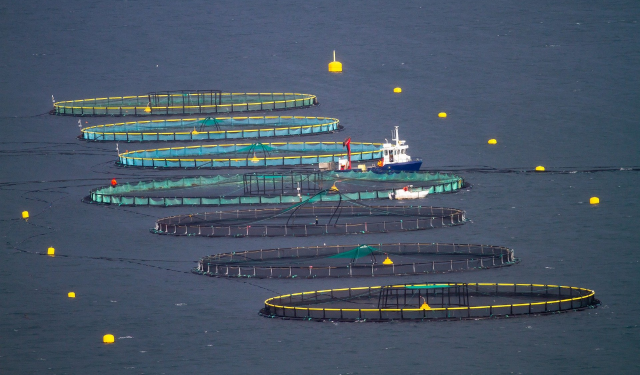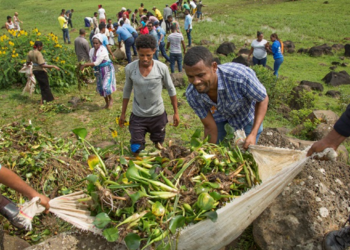Morocco Aquaculture a sector with a bright future – For the year 2022, marine aquaculture production exceeded the bar of 100 million dirhams in value.
In full dynamics, the aquaculture sector in Morocco is promised a bright future, thanks to the potential that abounds in the Kingdom, but also thanks to the strategies put in place, especially in recent years.
In addition to its role as a generator of income and employment, this sector aims to be an essential tool for making up for the lack of supply of marine resources linked in particular to the weakening of the natural capacity of the oceans to meet the needs of populations in this area. .
It is in this sense that the Director General of the National Agency for the Development of Aquaculture (ANDA), Majida Maarouf, affirmed that “aquaculture in Morocco is undergoing an evolution and a real anchoring in regions with strong aquaculture potential, contributing to enhance the local and national economy”.
The sector currently has 60 projects installed in the various regions of the Kingdom for an eventual production of more than 67,000 tons per year and 123 projects being installed for an annual target production of approximately 28,500 tons per year, said Ms. Maarouf in an interview with MAP.
For the year 2022, marine aquaculture production is around 1,300 tonnes, exceeding the bar of 100 million dirhams (MDH) in value, she added, noting that the sector currently has 60 active aquaculture farms. and employs just over 600 people.
Compared to 2021, the activity recorded growth of 17% in terms of volume and more than 50% in terms of value, driven mainly by shellfish farming (+33% in volume and 73% in value).
A sector with high investment potential
Capitalizing on its geographical advantages, its competitive advantages, its institutional stability and its economic openness, Morocco is now positioning itself as a country with high investment potential in aquaculture.
In this respect, Mrs. Maarouf underlined that the 14 calls for expressions of interest launched to date have shown a strong enthusiasm for investment in the sector, noting that in addition to the projects installed, ANDA supports currently 295 aquaculture projects under development with a target production capacity of around 195,000 tonnes per year in the long term.
Driven by private operators, these projects provide for investments estimated at more than 6.8 billion dirhams (MMDH) and should ultimately create more than 4,400 permanent direct jobs, and this in the livestock segment alone, adds the manager.
And to recall that the lion’s share goes to the region of Dakhla Oued-Eddahab, with 76% of the workforce of the projects and 40% of the estimated volume, followed by the region of Souss-Massa, with 8% of the workforce. projects for 38% of the forecast volume.
With regard to the seed segment (production of fingerlings and spat), a first shellfish hatchery is installed in Dakhla, with a capacity of 60 million spats of different species (oysters, clams), indicated Ms Maarouf, continuing that A fish hatchery is being developed in public-private partnership with a specialized private player, with a total project investment estimated at 120 MDH for an overall capacity of 20 million fingerlings produced locally.
Towards a consolidation of the regulatory framework
As part of efforts to strengthen the sector, Law No. 84.21 on marine aquaculture was recently adopted, with a view to providing the sector with a specific and modern legal framework, and offering a clear vision to investors.
According to Ms. Maarouf, the adoption of this bill in Morocco is an important step in strengthening the legal framework governing the aquaculture sector, as well as a positive signal for potential investors who will be more stimulated to engage in this sector supported by a modern and encouraging legal framework.
“This law introduces a number of important provisions likely to allow better management of the aquaculture sector, in particular through the regulation of spatial planning to ensure better coordination between stakeholders and guarantee the optimization of the use of marine and coastlines in the interest of the economic development of marine activities,” she noted.
In the same vein, Hajar Bouzaidi, specialist in biology and marine resources and representative of Morocco in the Alliance for Research on the Atlantic Ocean as a young ambassador, told MAP that this new law determines the principles and rules for the planning, development, organization and management of marine aquaculture, constituting a legal framework which grants aquaculture specific treatment as a sector and not a simple alternative to sea fishing.
“Aquaculture, which has always been considered as an activity complementary to maritime fishing in the absence of a legal definition, is today considered as a sector. It must be practiced to develop and compete with other socio-economic sectors. “, supported the specialist.
Morocco Aquaculture a sector with a bright future









